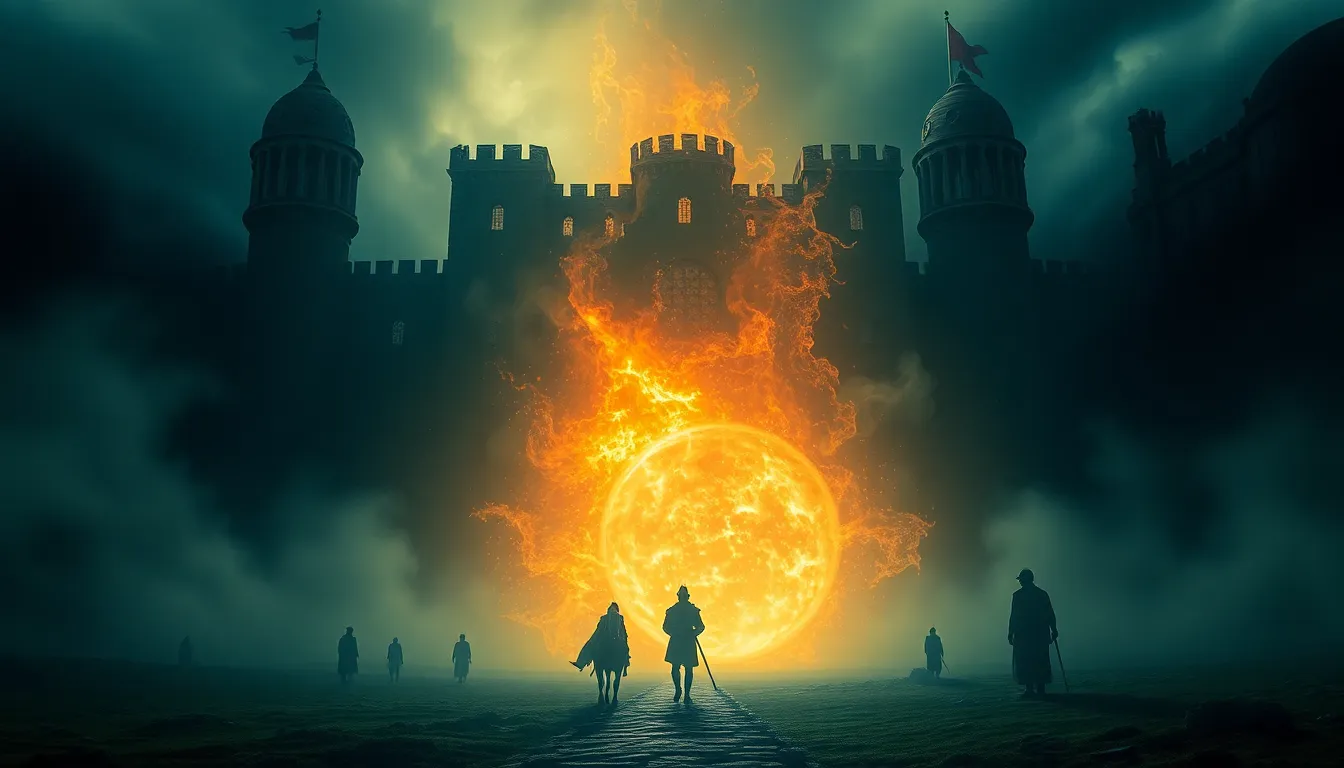The Kingdom of the Elementals: Myths of Nature’s Forces
I. Introduction to Elemental Myths
Elemental myths are narratives that personify the fundamental forces of nature, often depicting them as living entities or spirits. These myths serve to explain the natural world and the phenomena that arise from the four classical elements: Earth, Air, Fire, and Water.
The importance of nature in mythology cannot be overstated. Cultures throughout history have revered the elements as sacred and powerful forces that shape existence. The elemental myths are a reflection of humanity’s relationship with nature, embodying respect, fear, and admiration.
In this article, we explore the four elements, delving into their myths and the roles they play in various cultures around the world.
II. Historical Context of Elemental Myths
Elemental beliefs have been integral to ancient civilizations. From the Greeks to the indigenous cultures of the Americas, the elements were often seen as deities or spirits. These beliefs provided explanations for natural events and fostered a sense of connection to the earth.
- Ancient Civilizations and Their Elemental Beliefs: Cultures such as the Greeks, Romans, Chinese, and Native Americans each had unique interpretations of the elements and their associated spirits.
- The Role of Elementals in Early Religions: Elementals were often worshipped and appeased to ensure harmony with nature, reflecting their significance in early religious practices.
- Comparisons of Elemental Myths Across Cultures: While there are distinct differences, many cultures share similar themes regarding the elements, showcasing a universal understanding of nature’s forces.
III. Earth Elementals: Guardians of the Ground
Earth elementals, often referred to as gnomes, dwarfs, or spirits of the land, are believed to be guardians of the earth’s treasures. They embody stability, strength, and fertility, representing the physical realm.
Myths surrounding earth elementals often include tales of their role in agriculture, protecting crops, and nurturing the land. In many cultures, these spirits are revered as essential for a bountiful harvest.
Symbolism of earth varies across cultures, including:
- Stability: Earth is associated with grounding energies, providing a foundation for life.
- Fertility: Many cultures view the earth as a mother figure, nurturing and sustaining life.
- Protection: Earth elementals are seen as protectors of natural resources and the environment.
IV. Air Elementals: The Breath of Life
Air elementals, often referred to as sylphs or spirits of the winds, are associated with the sky, movement, and the breath of life. They embody the qualities of freedom, intellect, and inspiration.
Myths of air elementals can be found in various traditions, often depicting them as messengers or carriers of divine knowledge. They play a crucial role in creation stories, symbolizing the breath that ignites life.
The role of air in creation and transformation is profound, as it is often linked to:
- Communication: Air elementals facilitate the exchange of ideas and thoughts.
- Transformation: Air symbolizes change, illustrating how it can transform landscapes and life itself.
- Spirituality: Many cultures associate the air with the spirit, representing the connection between the physical and the divine.
V. Fire Elementals: Forces of Destruction and Renewal
Fire elementals, often represented as salamanders or fiery spirits, embody passion, creativity, and destruction. The dual nature of fire is evident in myths that celebrate its ability to create and destroy simultaneously.
Famous fire elementals such as the Phoenix symbolize rebirth and renewal, representing the cycle of life and death. Fire’s cultural significance extends across various societies, often depicted as:
- Destruction: Fire can bring devastation, representing chaos and uncontrollable forces.
- Renewal: Fire is also a symbol of transformation, leading to new beginnings after destruction.
- Passion: In many cultures, fire represents the human spirit’s fiery nature, encompassing love and ambition.
VI. Water Elementals: Flow and Fluidity
Water elementals, often called undines or spirits of the sea, represent fluidity, emotion, and intuition. They are associated with rivers, oceans, and rain, embodying the life-giving and transformative qualities of water.
Myths featuring water elementals often emphasize their powers over emotions and the subconscious. Water is frequently linked to:
- Emotion: Water elementals are seen as guardians of feelings, reflecting the depth of human emotion.
- Intuition: Water symbolizes the inner voice and instinct, guiding individuals in times of uncertainty.
- Healing: Many cultures view water as a source of healing, purifying both body and spirit.
VII. The Interplay Between the Elements
Mythology often explains how the elements interact, portraying a delicate balance necessary for harmony in nature. The relationships among earth, air, fire, and water are foundational in understanding the world.
The balance of nature’s forces is illustrated through:
- Elemental Interactions: Myths often depict scenarios where one element influences or transforms another, such as fire boiling water or earth nurturing plants through rain.
- Cycles of Nature: The changing seasons and natural cycles reflect the interplay of elements, emphasizing the interconnectedness of life.
- Modern Interpretations: Many contemporary narratives explore these relationships, illustrating their relevance in today’s understanding of ecology and environment.
VIII. Elementals in Contemporary Culture
The influence of elemental myths extends into contemporary culture, inspiring literature, film, and spiritual practices. These stories resonate with audiences, reflecting timeless themes of nature and humanity.
Elementals have found their way into:
- Literature and Film: From fantasy novels to animated films, elemental beings are often depicted as central characters, driving narratives that explore nature’s powers.
- Modern Spiritual Practices: Many spiritual movements incorporate elemental philosophies, promoting harmony with nature and the environment.
- The Revival of Interest: As society becomes more aware of environmental issues, there is a resurgence in interest in nature-based mythologies and their teachings.
IX. Lessons from the Kingdom of the Elementals
Elemental myths offer valuable lessons for modern society, particularly concerning environmental awareness and respect for nature. They remind us of our connection to the earth and the importance of maintaining balance.
The role of myths in understanding natural phenomena is crucial, as they provide frameworks for interpreting the world around us. Applying mythical wisdom can lead to:
- Environmental Awareness: Recognizing the significance of preserving nature and its resources.
- Understanding Natural Phenomena: Myths offer insights into the workings of nature, promoting curiosity and respect.
- Guiding Modern Life: The lessons from elemental myths can inspire sustainable living and a deeper connection to the environment.
X. Conclusion: The Enduring Legacy of Elemental Myths
In summary, elemental myths provide a rich tapestry of stories that reflect humanity’s relationship with nature. From the guardians of the earth to the spirits of the air, fire, and water, these narratives illuminate the forces that shape our world.
Preserving elemental myths is essential, as they hold wisdom that can guide us in navigating the challenges of modern life. We invite you to explore further the mysteries of nature and the timeless tales that celebrate the kingdom of the elementals.



